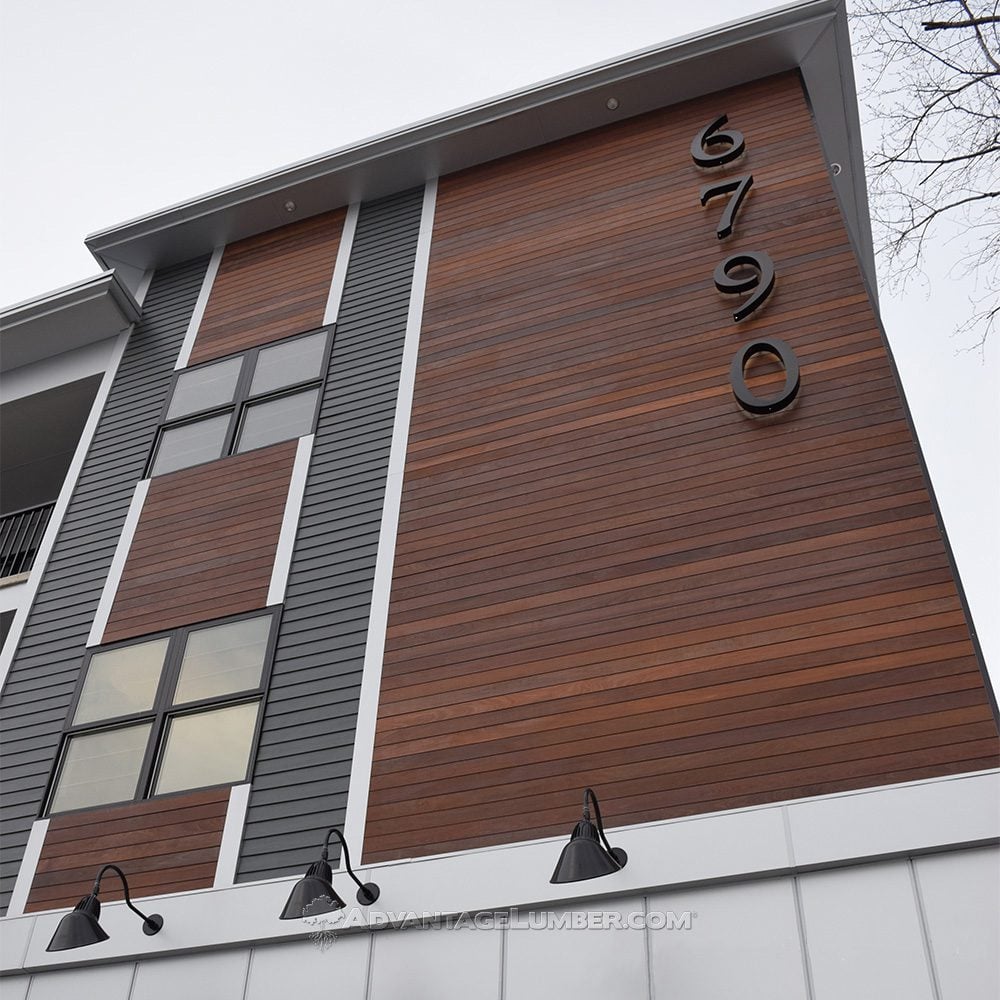Cladding is a crucial element in modern construction that serves both functional and aesthetic purposes. It involves applying one material over another to provide a protective layer that shields the building’s structure from external elements while enhancing its appearance.
Cladding can be made from various materials, including wood, stone, metal, and composite products, and it plays a vital role in improving a building’s energy efficiency, durability, and weather resistance.
In this blog post, we will dive into the role of cladding, its benefits, and some trending materials, including hardwoods and composite options like Trex and TimberTech decking.
The Role of Cladding in Building
Cladding acts as a building’s external skin, providing an additional layer of protection against wind, rain, snow, and even UV rays. Its primary functions include:
- Weatherproofing: Cladding serves as a barrier to prevent water infiltration, reducing the risk of water damage, mold, and rot within the structure. This is particularly important for maintaining the integrity of the building over time.
- Thermal Insulation: High-quality cladding materials can help improve a building’s energy efficiency by providing additional insulation. This helps to regulate indoor temperatures, reducing the need for heating or cooling and leading to lower energy costs.
- Aesthetic Appeal: Cladding dramatically enhances the visual appearance of a building. It allows for diverse architectural designs and styles, from sleek and modern to rustic and traditional, giving buildings a distinct identity.
- Structural Protection: By adding a layer of cladding, the core structure of a building is less likely to suffer from environmental wear and tear, which can increase the building’s lifespan.
Popular Cladding Materials
While there are numerous cladding materials available, natural hardwoods and composites are becoming increasingly popular due to their durability, beauty, and sustainable appeal. Let’s explore some of these trending materials.
1. Hardwood Cladding:
Hardwoods are a timeless and robust option for cladding. Below are some of the most popular hardwood species used for cladding:
Ipe Cladding: Known for its exceptional durability and rich brown color, Ipe is a highly dense hardwood that can withstand harsh weather conditions. It has a natural resistance to insects, rot, and decay, making it a preferred choice for cladding in both residential and commercial projects. Its longevity ensures that it retains its beauty for decades with minimal maintenance.

Cumaru Cladding: Sometimes referred to as Brazilian Teak, Cumaru is another dense and durable hardwood that offers excellent resistance to wear. It boasts a striking golden-brown hue that can add warmth and elegance to any structure. Like Ipe, it is naturally resistant to rot and insects.

Tigerwood Cladding: Known for its dramatic grain patterns and vibrant orange-brown color, Tigerwood is not only eye-catching but also durable. It makes a bold statement when used as cladding and offers natural resistance to decay and pests.

Teak Cladding: Traditionally used in shipbuilding, Teak is revered for its moisture resistance and durability. Its smooth grain and golden hue make it a luxurious choice for cladding, though it tends to be one of the more expensive hardwood options.

Other Hardwoods: Species such as Garapa and Brazilian Redwood also offer excellent durability, making them suitable for cladding in various climates.
2. Composite and PVC Cladding:
Composites and PVC decking products have also made significant inroads in the cladding industry due to their low maintenance and long-lasting properties.
Trex Composite Cladding: Made from a blend of wood fibers and plastic, composite cladding provides the look of natural wood without the maintenance. It is resistant to rot, fading, and cracking, making it an excellent choice for homeowners who want the aesthetic appeal of wood but with less upkeep. Brands like Trex and Deckorators offer cladding solutions that are environmentally friendly, as many composite products are made from recycled materials.

TimberTech PVC Cladding: TimberTech offers a PVC option that mimics the look of natural wood while providing superior durability and weather resistance. Unlike natural wood, PVC does not require staining or sealing and is highly resistant to moisture, mold, and fading. This makes TimberTech a popular choice for those looking for a low-maintenance, long-lasting cladding solution that still offers the beauty of wood.

Cladding Trends
The use of hardwoods and composite products for cladding is rising, driven by the growing demand for sustainable and low-maintenance building materials. Here are a few trends to watch:
- Sustainable Design: Many homeowners and architects are prioritizing sustainability in their building materials. Hardwoods like Ipe and Cumaru are sustainably harvested, making them environmentally responsible choices. Likewise, composite and PVC products are often made from recycled materials, contributing to eco-friendly building practices.
- Mixed-Material Cladding: Combining hardwoods with other materials like metal or stone is becoming a popular trend. This adds depth and contrast to the building’s design, allowing for more creative architectural expressions.
- Vertical Cladding: Traditionally, cladding was installed horizontally, but vertical cladding is gaining popularity for its modern aesthetic. Vertical lines can make a building appear taller and more streamlined.
- Natural Finishes: More homeowners are opting to let natural wood weather and age over time, allowing it to develop a silver patina. This look is particularly popular in contemporary and minimalist designs where natural materials take center stage.
Conclusion
Cladding plays an essential role in both the protection and beautification of buildings. Whether you opt for the timeless beauty of hardwoods like Ipe and Tigerwood or the low-maintenance convenience of composite and PVC options like TimberTech, there is a cladding material to suit any style and need. As trends continue to evolve, homeowners and builders alike are embracing sustainable, durable, and visually appealing materials to enhance the longevity and appearance of their structures.
